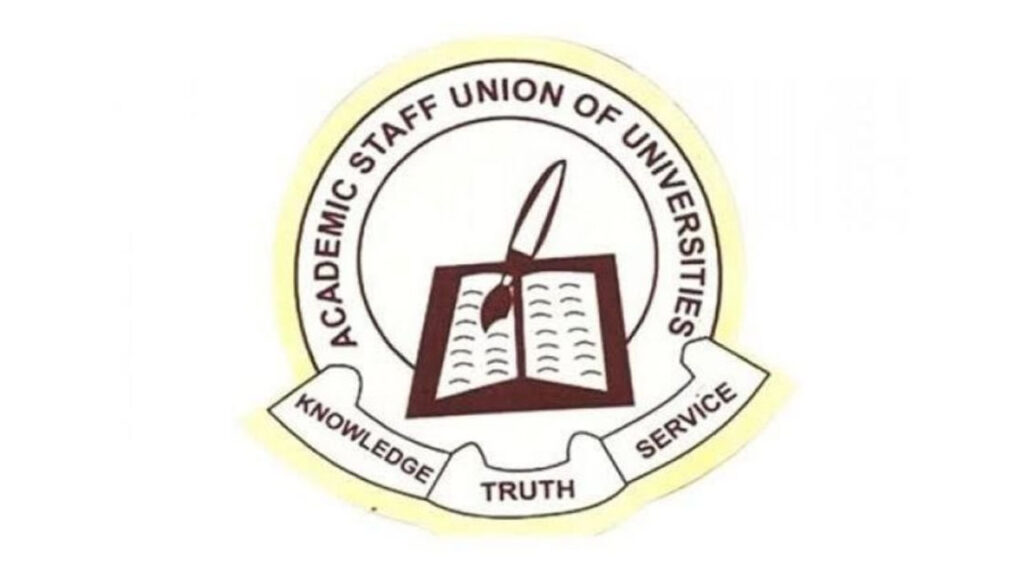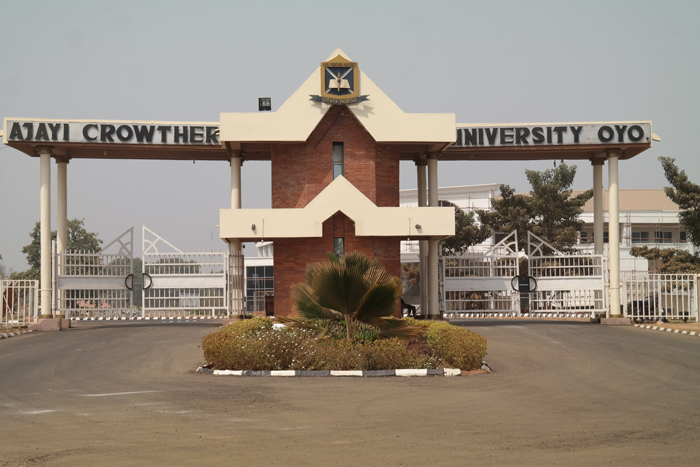The absence of digital records of students in most schools, as well as the lethargic response from some tertiary institutions, among others, are part of the encumbrances that are slowing down the implementation of the Federal Government’s students loan scheme, OWEDE AGBAJILEKE reports.
As applicants in public tertiary institutions scramble to apply for the student loan scheme of the Federal Government, the inability of most public tertiary institutions to fully transition from manual to digital database is slowing things down.
This comes as Information Technology (IT) experts have confirmed that most public tertiary institutions have no digital database of their students.
In the same vein, the exposé by the National Association of Nigerian Students (NANS) that most federal tertiary institutions are yet to upload data of their students to the students’ loan portal, may have opened a Pandora’s box over public universities’ lack of digital database for students’ population.
At a recent press conference, the Managing Director/Chief Executive Officer of the Nigerian Education Loan Fund (NELFUND), Akintunde Sawyerr, said that out of the over 60,000 successful registrations so far, 30,000 applicants from 119 institutions successfully applied for the facility in one week.
Although he said that “90 percent” of the 126 Federal Government-owned institutions have successfully uploaded data of their students, he, however, added that not all details of students have been successfully uploaded by the schools.
It would be recalled that the Fund had said that 1.2 million students from Federal Government-owned universities, polytechnics, colleges of education, and technical colleges were expected to benefit from the first phase of the scheme.
The Guardian investigations revealed that NELFUND’s insistence that the Joint Admission and Matriculation Board (JAMB) details of students, and other particulars should form part of the requirements for accessing the loan facility, is already causing sleepless nights for public higher institutions across the country.
The lack of a digital database, it was observed, partly explains why most institutions are foot-dragging in submitting complete students’ data to the agency, which has threatened to name and shame schools with incomplete student data on June 24.
A glance at NELFUND’s website revealed that while students of 126 federal tertiary institutions are eligible to apply for the scheme, with 1.2million students billed to benefit in the first phase of the exercise, findings revealed that most of the institutions have no JAMB details of their students.
At a Pre-Application Sensitisation Press Conference, Sawyerr said that only students whose institutions have completed and uploaded their students’ data on its database would be eligible to apply.
Besides the JAMB admission details, Sawyerr listed other requirements needed to apply for the loan, National Identity Number (NIN), Bank Verification Number (BVN), and completed application form from its website among others.
Findings, however, revealed that skewed admission processes/shady deals in some tertiary institutions, without recourse to JAMB admission letters, may have been responsible for the lethargic response.
A credible source in NELFUND, who spoke to The Guardian, revealed that schools are also holding back on uploading data of their students because some of the admissions did not follow due process.
“Part of the problem that we have is that, in their craving for money, most tertiary institutions gave admission to students without following due process. It will shock you to know that in an institution with say 5,000 student population, only a little over 50 per cent have JAMB admission letters. They came in through other means and what you call paddy paddy arrangement.
“Now we have asked for the real identity of their students by providing JAMB admission details, and the majority of them can’t provide it. They never knew a day like this would come,” the source who did not want to be named because of the sensitive nature of the matter, revealed.
Another source said that the situation is even worse at state universities where governors are the visitors. There, admissions are given to governor’s recommended candidates without the necessary paperwork,” he alleged.
Also, another challenge that institutions are grappling with, is sending the wrong students’ data to NELFUND, as recounted by a distraught parent whose son schools at the Federal University of Technology Akure (FUTA).
The father, AlabiAdemola, expressed dismay that his son was unable to register for the scheme because his institution uploaded the wrong matriculation number.
His words: “The students’ loan scheme is a good development towards the advancement of education as it will help children of the poor to have access to higher education. During my time at the University of Ibadan, some of my mates resorted to washing dishes at various bukaterias within the campus to pay their school fees, faculty, and departmental fees.
“With the coming on board of this loan scheme, students from poor homes will be able to go to the universities and concentrate fully on their studies.
“My son has been trying to input his information into the portal, but his university is making things difficult because his matriculation number couldn’t be accessed by the loans’ board. The fault is from his university. Most of these universities have no digital database systems, and this is very unfortunate”.
He called on schools to upscale the process of transiting from paper to digital database systems and transmit the same to the Fund as soon as possible, adding that his son has lodged a formal complaint with the school’s IT Department.
However, FUTA is not alone. In the University of Abuja (UNIABUJA) for instance, a final-year student lamented that some students were admitted without JAMB admission letters.
“We are in the Second Semester at the moment, but some of us are just receiving our admission letters as final-year students, and this has deprived us of several opportunities. Some of my colleagues are still waiting for their JAMB admission letters as I speak.”
The first phase of the programme was launched recently for federal tertiary institutions, and the agency said those of state tertiary institutions would be announced in due course.
A couple of weeks back, the National Association of Nigerian Students (NANS) frowned at the lethargic response of federal tertiary institutions to the initiative, even as the umbrella body of Nigerian students accused most federal institutions of failing to upload data of its students to the Fund’s database.
This, it lamented, would hinder the application of students in the affected institutions.
NANS President, Lucky Emonefe, made the allegation in a memo seen by The Guardian to all Student Union Government (SUG) presidents, chairmen of NANS Joint Campus Councils, as well as zonal coordinators of the association.
He called on the student leaders to prevail on the respective management of their institutions to comply with NELFUND directives, pointing out that any tertiary institution that fails to submit its students’ data to the agency, would be excluded from accessing the loan.
Commenting on the dearth of digital database systems in schools, some IT experts told The Guardian that most public tertiary institutions have no digital database requested by NELFUND, stressing that what they have is a manual or paper database.
A data analyst, Joseph Dokhare, pointed out that this explains the lethargic response from tertiary institutions in uploading the data.
This, he disclosed, would pose a serious challenge for applicants, as it takes snail speed for schools to transition from paper database to digital format.
Dokhare said: “Public tertiary schools have data on their students. However, the challenge is the bureaucracy of transferring these data to the NELFUND portal. It’s just like when you apply for a transcript. You have to follow up with your school to ensure they forward the transcript to the university when you are applying for a new programme. So, if this is the hurdle that we pass through in Nigeria just to get our transcripts, how much less a loan that you are not paying the school directly? And the body (NELFUND) is requesting your school to send your information to them. It is going to be a huge bureaucracy for the schools.
“But in terms of whether the schools have the data, yes they have it. Some have it manually or in hard copy. Most of the schools in Nigeria still use manual processes for handling transcripts. For instance, after you apply for your transcript upon finishing from the Mathematics Department, the Exams Office will go to your former department and confirm your raw scores; write them out, and all of that. That’s what takes time. They still do manual processing because they don’t have their results digitised. So, in the same way, many schools don’t have digital records of students’ data. But they have it in hard copy. So, that’s going to create a serious bureaucracy for students to apply for the loan.”
Also, a security operations centre (SOC) analyst, NandomMutfwang, said the major challenge for tertiary institutions isdigitising their database.
This, he said, would create massive jobs in the Information Communication Technology (ICT) sector as higher institutions would have to onboard IT experts to convert the paper database into digital form.
“That is why data entry jobs are popular abroad because of things like this. Imagine a school with over 5,000 students and all their data is on paper. They need to make everybody’s data available online. If they are not doing it and they want to start, they have to start with past students, meaning any new student coming in would either be done immediately or would have to wait for the bulk to be done. So, it’s a complicated situation. I don’t think the students’ loan was a well-thought-out plan. It was a good idea to sell.”
Throwing more light on the matter, Mutfwang explained that having a functional website does not necessarily translate to possessing a functional database, noting that while private tertiary institutions have digital databases, the same cannot be said of their public counterparts.
“A functional website is a front-facing website; people who want to see what your school is about, publications, and alumni associations. Some of these public schools, if you ask them, can’t check their results online because there is no database. The database I am talking about is not for the front-facing website but a backend arrangement. It’s for the registrar’s office specifically. In each school, the registrar’s office is meant to have a database of all students, their payment information, academic records, and so on.
“It’s visible to the blind, audible to the deaf, private higher institutions have digital databases compared to their public counterparts. So, if they want to track when you come into the school, they can track it from the database and not on paper. It’s only in public schools that you will be moving from office to office looking for your results…” he stated.
Commenting on the development, the Fund’s Media and Public Relations Lead, NasirAyitogo, said: “Out of 100 percent of the challenges, over 50 per cent are from the institutions because some of the institutions are yet to upload their institutional fees schedule. Secondly, some schools have yet to upload data on their students. If you don’t upload data of your students on our students verification system, there is no way such students will find their details on the portal.
Another challenge is on the side of the students majorly. It is the challenge of typographical errors when they are entering their email addresses. Some of them enter the wrong email addresses, and verification codes are sent to the wrong email addresses.
He noted that some schools are already responding, and he was upbeat that the hurdles faced would be surmounted in no distant time.
In what appears a twist, a source at the Federal University of Technology Akure (FUTA) blamed the doorstep of NELFUND, insisting that the school is yet to receive formal communication from the agency regarding the loan facility.
He said: “I can confirm that the university is awaiting further instruction about what to do. We are yet to upload the (students’) data. They have not asked us to do so. We don’t have a communication yet with NELFUND.”
When they reach out to us we will do the needful. I don’t think it has gotten to that stage yet”.
Reacting, the Director, Corporate Communications & Protocols, FUTA, Adegbenro Adebanjo, emphasised that the challenges encountered by students is not peculiar to the school but “all students in Nigeria.”
In his words: “We work in the system with relevant bodies and organisations. And the moment they ask us to do anything relating to our university, we do it with dispatch, and excellently too. When we get to that stage, we will do what we are told to do”.
But in a chat with our correspondent, the Fund’s spokesperson insisted that the agency formally communicated to all universities through the Committee of Vice Chancellors, as well as the National Universities Commission (NUC).
Nasiru stated: “NELFUND wrote to the Committee of Vice Chancellors, which the FUTA VC is part of and also wrote through the NUC, and the NUC has confirmed that a communication was sent to all the universities to submit their data and fees schedule to the Students Verification System (SVS)”.
On its part, the University of Abuja (UNIABUJA) through its Director of Public Relations, DrHabibYakoob, maintained that several students could access the portal. On the delay in transmitting from manual to digital database, Yakoob said: “There is no delay. We are there already. The integrated portal is an evidence of digitalisation.”












